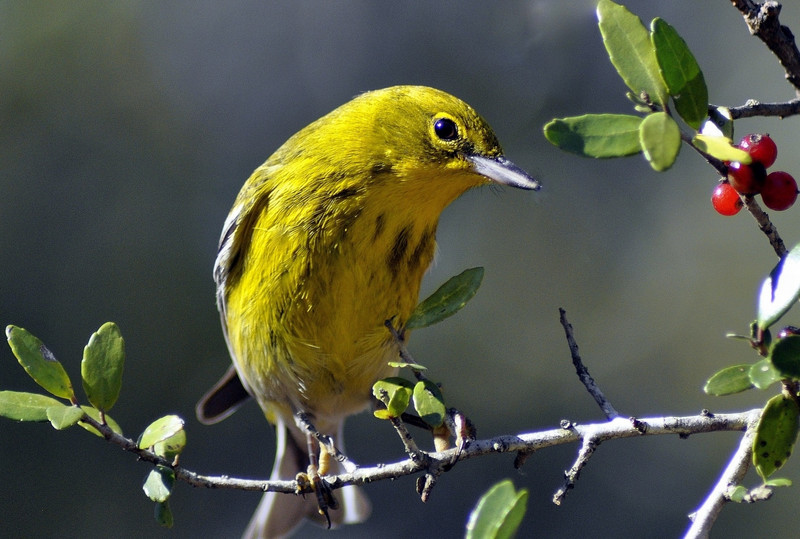Pine Warbler (Dendroica pinus). He is distinguished from other warblers by his white wing bars. He's quite small, maybe 5-5½" (13-14 cm).
Yellow-Bellied Sapsucker (Sphyrapicus varius). Note the longish white wing patch and red forehead patch. This bird is 8-9" (20-23 cm).
Tufted Titmouse (Parus bicolor). This bird has a distinctive voice. . . a clear, whistled chant: peter, peter, peter, or here, here, here. Titmice feed on insects, seeds, and berries. Note that red leaves in Florida this time of year generally indicate sprouting trees. Our spring is well under way.
Ruby-Crowned Kinglet (Regulus calendula). Tiny at 4" (10 cm) this bird is in the family Sylviidae (Gnatcatchers and Kinglets).

The plentiful Red-Winged Blackbird (Agelaius phoeniceus).

Red-Tailed Hawk (Buteo jamaicensis). We have one that dominates the cul-de-sac in Deltona and another in Debary that ranges over about 200 acres and rests atop the 90' power poles.

Osprey (Pandion haliaetus). I've seen many, many fewer of these birds this winter as the lakes have virtually vanished. They primarily eat fish.
House Finch (Carpodacus mexicanus). Originally this bird only resided in Mexico and the southwestern USA. It was introduced to eastern North America in 1940. They have become naturalized and quickly spread throughout the eastern USA. From the original small number of birds released on Long Island, NY in 1940, they are now estimated to total a staggering 1.4 billion individual birds ranging from the Hawaiian Islands across North America.
Carolina Chickadee (Poecile carolinensis). Audubon named this bird while he was in South Carolina. The curious, intelligent Carolina Chickadee looks very much like a Black-capped Chickadee, with a black cap, black bib, gray wings and back, and whitish underside. Carolina and Black-capped chickadees hybridize in the area where their ranges overlap, but the two species probably diverged more than 250,000 years ago. They are tiny 4-5" (12-14 cm).
ABOVE and BELOW: The plentiful Northern Cardinal (Cardinalis cardinalis). I have three pair of these in Deltona who spend hours eating what remains of the last crop of sunflower that bloomed last December.
BELOW: Brown Thrasher (Toxostoma rufum). These birds are plentiful but hard to spot. They spend a lot of time foraging in leaves in our woods.
We've Read:
Room With A View
The EPA's first-ever analysis on the effects of chlorpyrifos, diazinon and malathion on endangered and threatened species and designated critical habitat nationwide. The resounding conclusion? Pesticides are terrible for them.












